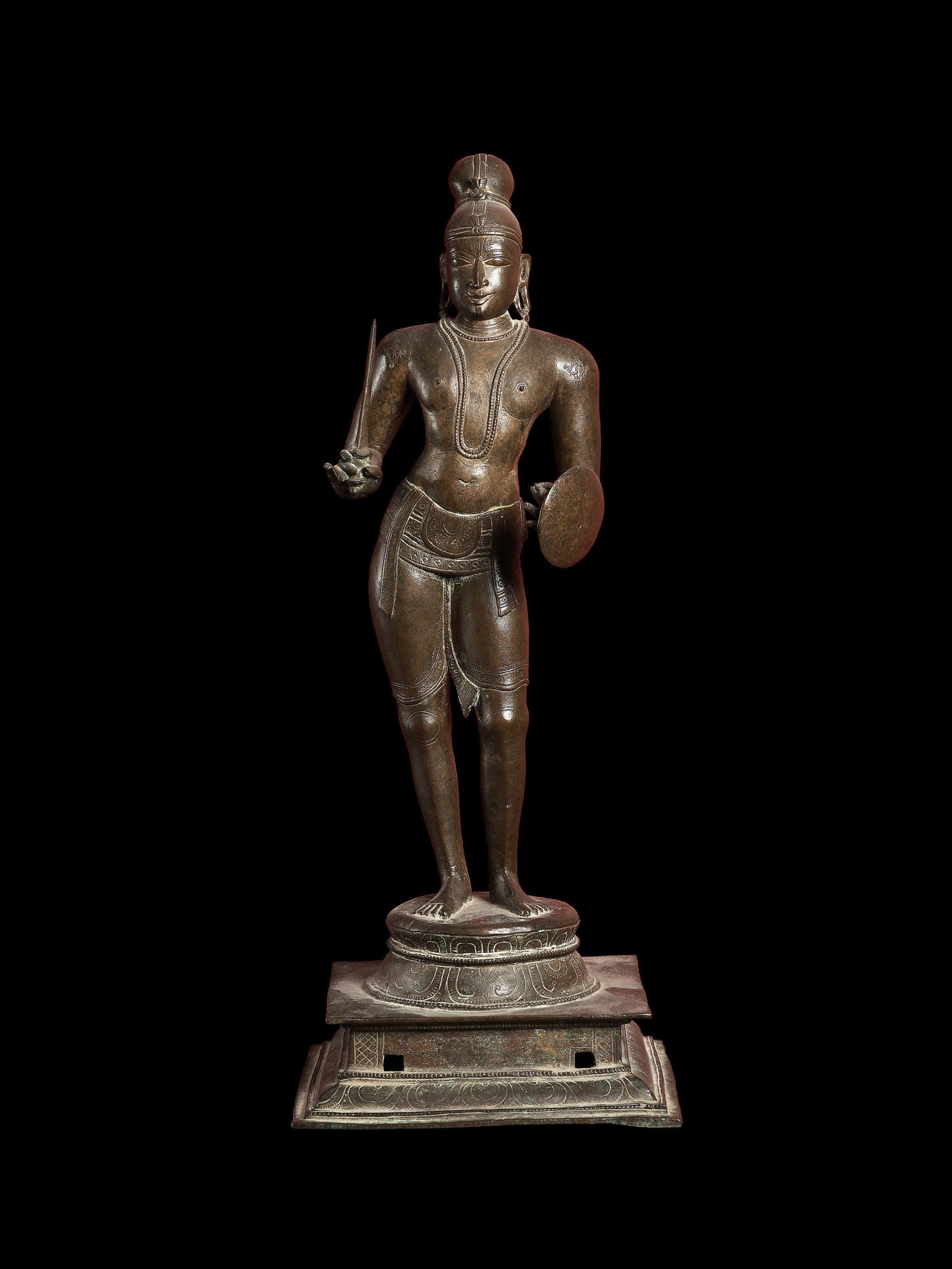Cultural Restitution
SHARE ARTICLE
Once alerted to the news that a 16th century Indian bronze statue in their collection may have been looted, the Ashmolean Museum, Oxford has wasted no time investigating the statue’s true provenance.
If the statue is found to have been looted, a spokeswoman for the Museum has confirmed they are open to convening discussions with the Indian High Commission about possible repatriation to India.
In November 2019, an independent scholar researching in the photo archives of the IFP-EFEO ( Institut Français de Pondichery and the Ecole Française d’Extrême-Orient ) discovered an image of what they understand to be the exact same bronze statue of Saint Tirumankai Alvar in situ within the temple of Shri Soundarrajaperumal Kovil in Tamil Nadu. The image apparently dates to 1957.
The Ashmolean acquired this 16th century bronze statue, about 60cm in height, in good faith ten years later at an auction held in 1967 by Sotheby’s of Indian and Southeast Asian art. The catalogue states it came from the collection of Dr J R Belmont (1886-1981), described by Sotheby’s as a ‘visionary European collector’ who amassed one of the pre-eminent collections of Indian sculpture and miniature paintings in Europe in the 1950s. There is no indication how the bronze statue entered his collection. Works of art from the Belmont collection continue to turn up in major auctions of Indian and Southeast Asian works of art.
It now seems there are grounds for undertaking a closer investigation of how this bronze, along with other Indian sculptures sold in Europe and the Unites States since the 1960s, came to leave India. The same independent scholar who is querying the Ashmolean’s statue has identified several other Indian bronzes in the IFP-EFEO photo archive now held in major collections across Europe and the United States. How many of these may also have been looted?
Although there was no claim against the object, the Museum contacted the Indian High Commission on 16 December 2019 asking for India's co-operation in researching any police records of temple looting in order to establish the statue’s true provenance. The Commission replied a few days later saying they had forwarded the matter to the Indian authorities. They also expressed their appreciation for the Museum's proactive approach.
We understand the Indian High Commission is convinced the Ashmolean’s statue is the 16th century original, looted from the temple at Tamil Nadu in the late '50s or early '60s and replaced with a fake. A formal claim for restitution may not be long in coming.
After this was written.....
A formal claim from the Indian High Commissioner for the bronze's repatriation was received by the Museum on 3 March 2020. A visit to India to complete 'due-diligence' on the statue by a member of the Ashmolean's team was delayed by the pandemic. However, in July 2022 the Museum's Curator of Indian Art finally met with police officers from the Idol Wing, as well as senior officials of the Archaeological Survey of India (ASI) and other parties. ASI officials asked the Museum to carry out a metal analysis of the bronze, which after submitted to the ASI, will in turn enable the ASI to complete a final report on the statue and its known provenance. The Ashmolean has completed their metal analysis and is currently awaiting this final report, after which the claim will be submitted to the Museum's Board of Visitors (trustees). Under the University's 'Procedures for the Return of Cultural Objects', the final decision on the repatriation of any object resides with the Vice-Chancellor of the University of Oxford.
Photo: A 16th century bronze statue of Saint Tirumankai Alvar
Courtesy of Ashmolean Museum, University of Oxford
More News




